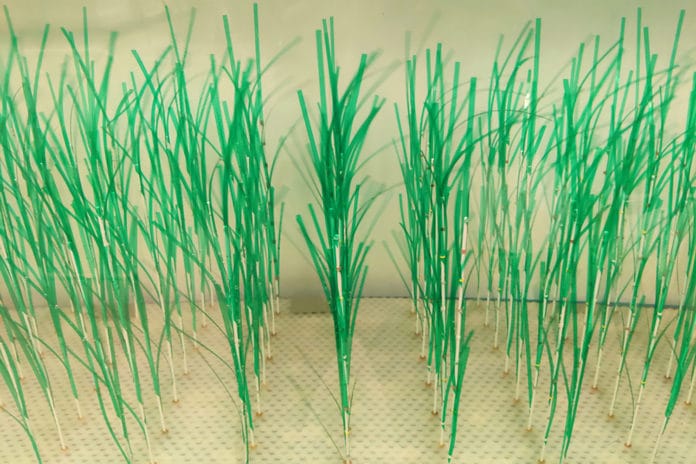Marshes are large expanses of wetlands dominated by grasses. These plants play a vital role in alleviating the damage to coastlines as sea levels rise and storm surges increase.
A new study by MIT scientists shed light on how these plants work under real-world conditions shaped by waves and currents.
To understand the details of plant morphology, scientists used simulated plants in a giant wave tank and mathematical modeling.
Understanding details could help coastal restoration planners to determine the area of marsh needed to mitigate expected amounts of storm surge or sea-level rise. Based on this information, they could decide which types of plants to introduce to maximize protection.
Professor of civil and environmental engineering Heidi Nepf said, “When you go to a marsh, you often will see that the plants are arranged in zones. Along the edge, you tend to have more flexible plants because they use their flexibility to reduce the wave forces they feel. In the next zone, the plants are a little more rigid and have a bit more leaves.”
With progress in the zone, the plants become stiffer, leafier, and more effective at absorbing wave energy thanks to their greater leaf area.
Scientists simulated the Marsh plants in a 24-meter-long wave tank at MIT’s Parsons Lab. Wave decay was measured over a meadow of flexible model plants that are geometrically similar to Spartina alterniflora with and without a current.
Consistent with previous observations, the wave energy dissipation depended on current velocity to wave velocity. Compared to the same pure wave condition, wave energy dissipation was enhanced by large but large Uc/Uw but decreased for small Uc/Uw.
Nepf says, “It also provides a more quantitative way to estimate the value provided by marshes. It could allow you to more accurately say, ’40 meters of marsh will reduce waves this much and therefore will reduce overtopping of your levee by this much.'”
“Someone could use that to say, ‘I’m going to save this much money over the next ten years if I reduce flooding by maintaining this marsh.’ It might help generate some political motivation for restoration efforts.”
Journal Reference:
- Xiaoxia Zhang et al. Wave damping by flexible marsh plants influenced by current. DOI: 10.1103/PhysRevFluids.6.100502
